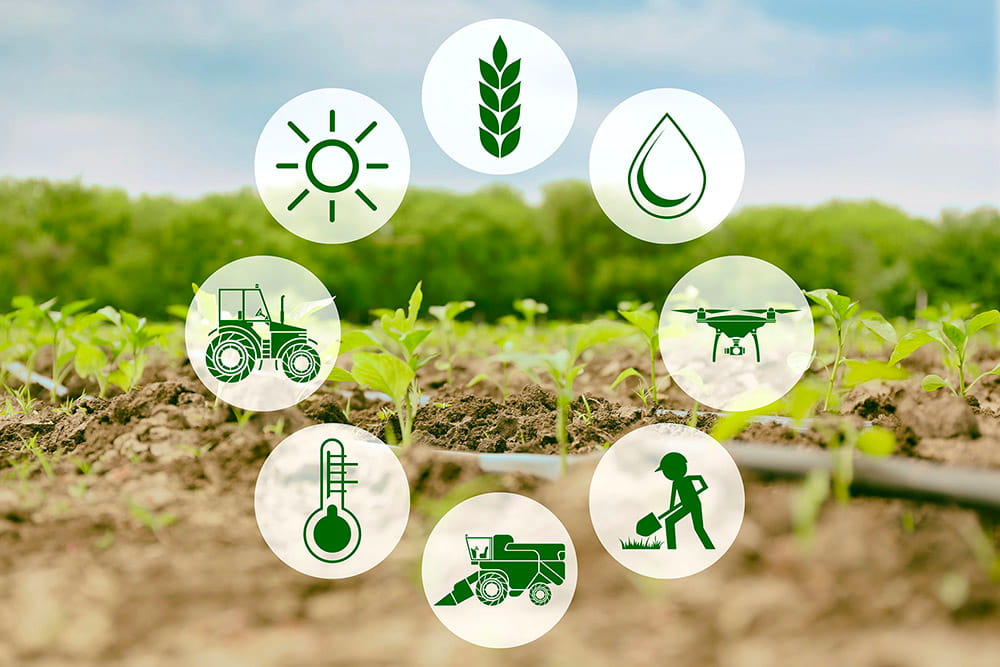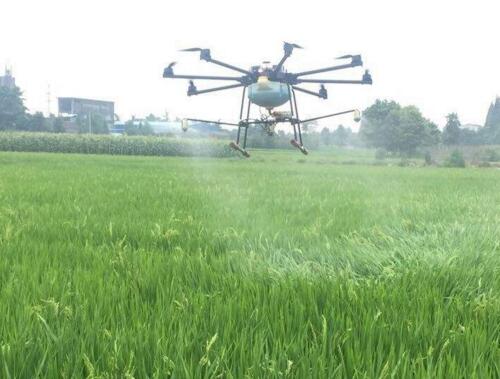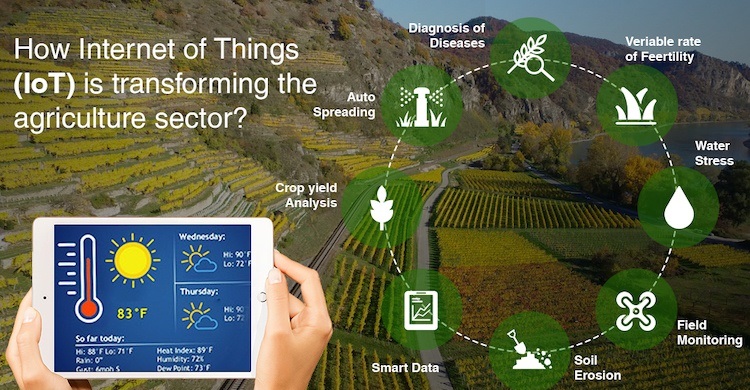0
You have 0 items in your cart
Agriculture is a vital part of global economics. Many countries around the world rely on agriculture for sustainability through food, employment, and economic stability. Refining agricultural practices to cut down on both costs and labor will help boost output and profits. IOT for agriculture can help do this across the world.
 IOT stands for Internet of Things. Just like a smart device helps consumers track daily activity and complete tasks, IOT for agriculture does the same for agriculturists. Farmers and other employers use devices controlled by the internet to track, manage, and maximize a farm’s output.
IOT stands for Internet of Things. Just like a smart device helps consumers track daily activity and complete tasks, IOT for agriculture does the same for agriculturists. Farmers and other employers use devices controlled by the internet to track, manage, and maximize a farm’s output.
As the global demand for goods increases, it’s crucial for farmers to increase supply. Keeping up with such a rapid increase in goods can be difficult – if not impossible – solely using manual labor. Using IOT for agriculture can help farmers increase output by using innovative technology. Using technology to meet increased demands will allow farmers to grow exponentially and be more profitable.
IOT for Agriculture has many different looks, each with a specific solution on the farm. IOT for agriculture utilized robots, drones, remote sensing, and security measures to allow farmers to have a more effective planting and picking process, automated irrigation, livestock monitoring, and streamline other essential activities.
Robotics
Robots used in agriculture are commonly called agribots. Agribots replace or enhance tasks typically done by manual labor. Agribots are relatively new to the agricultural scene but are proving to be a useful tool to combat labor shortages and increase output.
A primary use for Agribots in the field is in the form of weed management. Agribots can distinguish between weeds and crops within a field. Once the agribot identifies a weed, it can then spray it with a weed killer using its robotic arm. Using robots to combat weeds is faster and more cost-effective than using manual labor to complete the job.
Agribots are also highly effective in crop picking. These robots are highly sensitive to crop ripeness; therefore, the robots can go through fields and accurately pick ripe and ready crops. Using robots for crop picking cuts down on labor costs. Not only do the robots eliminate the need for manual labor, but they can also work around the clock without a break, which humans cannot do. Robots can pick crops both in the field and in a greenhouse.
 Remote-controlled agribots are an essential part of field management. A farmer can use a remote control to navigate heavy machinery to plow and seed large land areas. GPS monitors the robots, and the robots are sensitive enough to detect changes in terrain and navigate obstacles. Using robotic machinery cuts down on labor-intensive and challenging work.
Remote-controlled agribots are an essential part of field management. A farmer can use a remote control to navigate heavy machinery to plow and seed large land areas. GPS monitors the robots, and the robots are sensitive enough to detect changes in terrain and navigate obstacles. Using robotic machinery cuts down on labor-intensive and challenging work.
Drones
Utilizing drones allows farmers to gain a better understanding of their land. Drones can map out a farm, surveying large and small patches for damage, accessibility, and vitality. Drones for agriculture have cameras attached to them to give a more accurate and clear picture of the land. Farmers can control the drones by a remote or program them with a predetermined route based on GPS coordinates. The drones will deliver data that helps farmers understand the farm’s soil, landscape, and vitality.
 IOT for agriculture is the centerpiece for automation within several farming aspects. One way is to use smart irrigation systems. Remote irrigation monitors the farm’s soil and adjusts irrigation levels based on the soil’s humidity, moisture, and other factors. So, instead of setting the irrigation system to water crops on a set schedule, smart irrigation bases its watering schedule on what the soil needs at any given time.
IOT for agriculture is the centerpiece for automation within several farming aspects. One way is to use smart irrigation systems. Remote irrigation monitors the farm’s soil and adjusts irrigation levels based on the soil’s humidity, moisture, and other factors. So, instead of setting the irrigation system to water crops on a set schedule, smart irrigation bases its watering schedule on what the soil needs at any given time.
Automated irrigation systems save money because it cuts down on wasteful water usage and decreases the chance of ruined crops due to under or overwatering. Remote irrigation supplies crops with the correct amount of water at all times, which gives them the best chance of survival. A smart irrigation system is becoming a critical part of any successful farm.
On larger farms, it can be challenging to track all livestock, their movement, and their health. But, effectively monitoring all livestock is vital to both supply levels and financial success.
Monitoring Movement
Livestock can sometimes roam too far, leaving the area altogether, rendering a complete loss for the farm. Losing livestock is very costly because it decreases the supply for industries relying on that livestock. IOT for agriculture uses GPS technology to track livestock and will send an alert if livestock roams too far. This technology enables farms to keep better track of livestock and retrieve them before they are lost.
Health Monitoring
Part of monitoring livestock includes tracking their health. IOT for agriculture uses chips to run various health checks on animals like pigs, sheep, and cows. The chips are on the animal’s body – most likely their ear or tail – and monitor the animal’s temperature and activity. If there is an abnormality, the chip will send out an alert, enabling farmers to quickly pinpoint potential health issues. Finding health problems early and separating the affected animal can significantly cut down on disease spread within a group of animals. Widespread disease can kill or otherwise damage valuable livestock.
One company out of Australia is developing a chip that goes inside an animal’s body instead of on it. Farmers implant the chip inside a cow’s body to monitor its health. The company says the benefit of this new chip technology is more effective because the cows cannot remove it. The chip can also monitor the herd’s whereabouts and movement patterns.
IOT for agriculture is an ever-evolving industry aiming to increase production and decrease costs. The technology does this by cutting down on manual labor by using robots to plant and pick, use smart irrigation systems, and chips and GPS for livestock health and movement monitoring. IOT for agriculture is positioning itself to become a vital part of running successful farms that can keep up with the increasing global demand for agricultural products.
